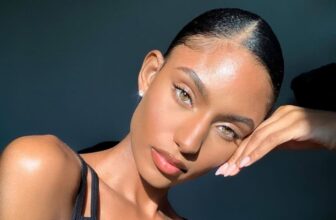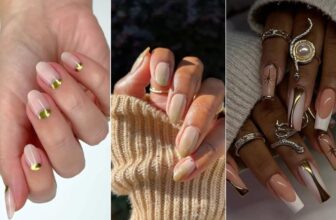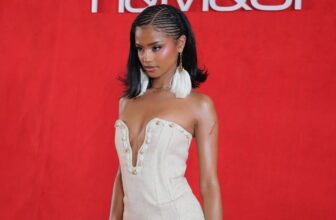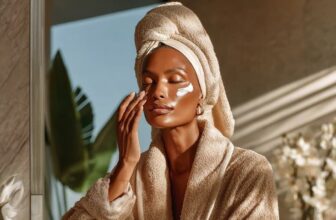Lipstick is one artistic aspect of women’s fashion that has stuck so firmly since its inception. It’s a dynamic world, after all, and lipstick has found its custom place in this consistent dynamism. From various shades of perfection to shimmery designs and formulations, brands have explored the evolution of this beauty phenomenon. Looking back, there have been some healthier and trendier introductions to modern lipsticks unlike it was in the past. Keep reading to see how lipsticks interestingly evolved!
Lipstick is a type of cosmetic that gives the lips color, texture, and protection. The lipstick comes in a variety of colors and styles. Some lipsticks double as lip balms, providing color as well as hydration. With a traditional inspiration from the ancient Egyptians, ingredients are ground and heated to make lipstick in today’s world. Afterward, heated waxes are added to the mix for texture. For specific formula requirements, oils and lanolin are added. The hot liquid is then poured into a metal mold. After that, the mixture is chilled. They are heated in flame for half a second after they have hardened to create a shiny finish and to remove imperfections.
The 13th century witnessed the creativity of makeup application in the hands of Mesopotamian women. These overly adventurous girls, wives, and mothers subject to the Mesopotamian culture and religion thought to try the crushing of gemstones to make tubes and bugs, with a mixture of oils and waxes to make red colors for their lips. There, about 5,000 years ago became a creation that has lasted for women, globally, to this day, according to a journal by Schaffer Sarah.
In that age, makeup was considered a status symbol with both men and women adorned in it. Not only that, makeup had a medicinal appeal with a composition of natural elements such as; fruits, henna, clay, and insects. Makeup truly wasn’t a new thing to those Sumerians but the Mesopotamian women in their quest for affluence, added glimmer to their lips using the crushed gemstones. How fanciful!
Lipsticks from the 16th century
In 16th-century England, bright red lips and a stark white face were fashionable during the reign of Queen Elizabeth I. At the time, lipstick was made from a mixture of beeswax and natural red stains and was only accessible to upper-class women, prostitutes, and actors up to 3 centuries later.
The sexual conceptualization of lipstick after it began to gain massive popularity in the 19th century was almost like the beginning of the feminine nightmare. Wearing red lipstick was seen as a sign of female rebellion and sheer seductiveness in the early twentieth century, after centuries of male authority restricting the use of cosmetics. Lillian Faderman and Stuart Timmons cited in their book “Gay L.A.: A History of Sexual Outlaws, Power Politics, and Lipstick Lesbians,” that parents hated their teenage girls as a result, and even the church was not left out as they forbade the use of lipsticks, or any makeup, after the advent of Christianity and puritanical beliefs.
Despite all of the opposition, Guerlain, a French perfume company, went ahead, as the first to commercialize lipstick on a large scale in 1884. Deer tallow, beeswax, and castor oil were used to make their lipstick, which was then wrapped in silk paper.
Following that, in 1915, Maurice Levy invented lipsticks in cylindrical containers. To move the lipstick to the top of the case, women had to slide a tiny lever on the side of the tube with the edge of their fingernails.
 Photo: Matthew Reyes/Unsplash
Photo: Matthew Reyes/Unsplash
Then came the popularity of lipsticks…
Lipstick had become an indispensable and inexpensive part of women’s daily lives by 1920. As the imitation of fashion icons as encouraged by magazines and rising cosmetic companies at that time became more prominent, more and more women were inclined to explore the trendy colors — plums, aubergines, cherries, dark reds, and browns. In the same year, the rave of feminism was so much in the air as more and more women demanded more rights, including the right to vote. Lipsticks were deeply considered a symbol of feminism at the time.
With a tremendous shift from the era of female subjugation, and after World War II, Hollywood glam icons such as Grace Kelly, Marilyn Monroe, Audrey Hepburn, and Elizabeth Taylor began leading fashion trends all over the world. While many women desperately desired to epitomize their favorite Hollywood actresses, lipstick became more popular than ever. This was back in the 1950s, the same period when the war of cosmetic brands began and Hazel Bishop launched his ‘no smear, kiss-proof lipstick’ with the maxim—“won’t eat off-bite off-kiss off”
The renaissance of black lipsticks
As more cosmetic companies entered the market, black lipstick became popular in the late 1970s into the early 1990s. Black lipstick was worn by actresses in horror films in the 1950s. It made a big comeback as a result of the punk and Goth subcultures.
The late twentieth century saw the complexities of lipsticks narrowed down to simple, from shimmers and gloss to bold red lips to hot pink lips, to tattooed lipsticks, to dark lip liners, and to light lipstick. People were also becoming more environmentally conscious, which increased the demand for chemical-free, natural lipstick formulas.
And eventually, lipsticks prevailed wide and loud
From the year 2000, up till now, there’s so much to be said about how deeply this fashion accessory has progressed from its ancient and medieval representations to its current expressions in today’s fashion and largely for women. Now, the variety of lipstick colors and formulas available today is mind-boggling. Liquid, lip balms, glosses, crayons, pencils, liners, palettes, and stains are among the many variations.
Lipstick became a symbol of femininity in the 1960s and has remained so even with the intense passing of time. With such a long history of creativity, shades, and colors to its credits, there’s undeniably more to unfold as new formulations begin to emerge. You already know, as established at the onset the world is a dynamic, after all!






